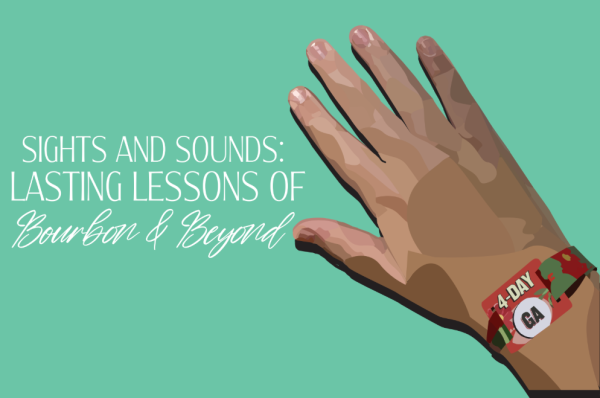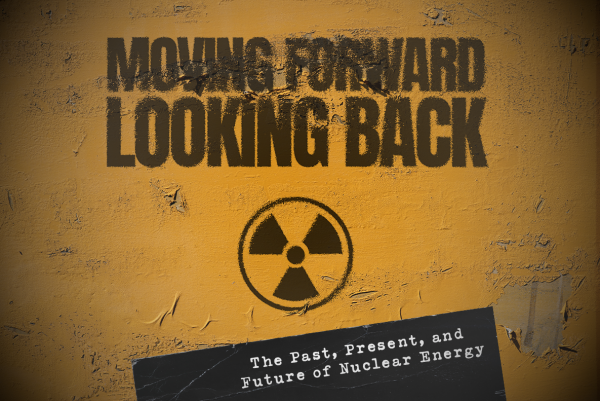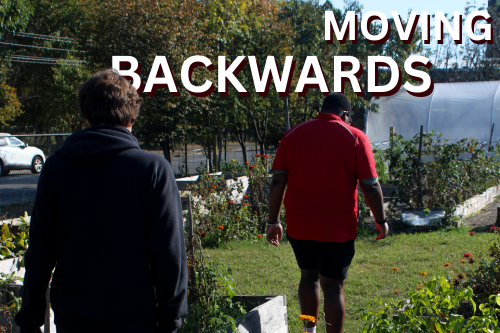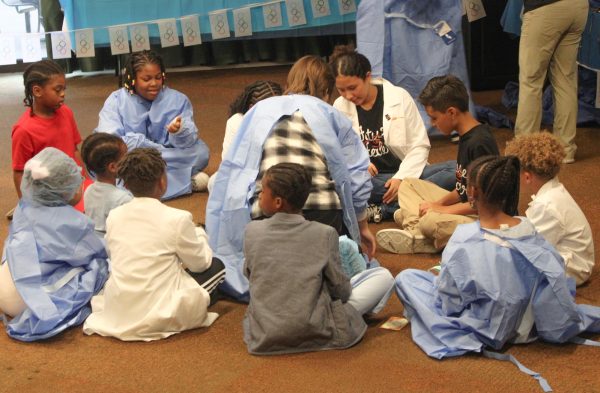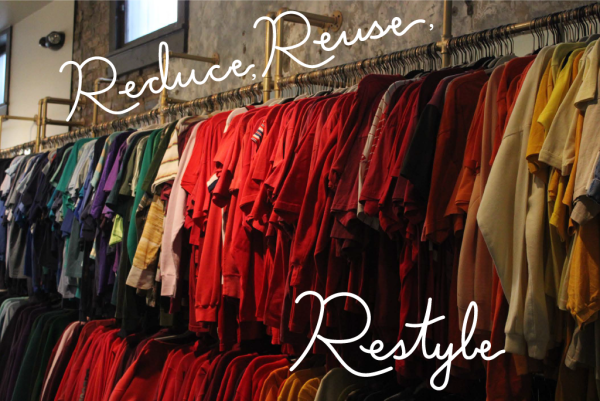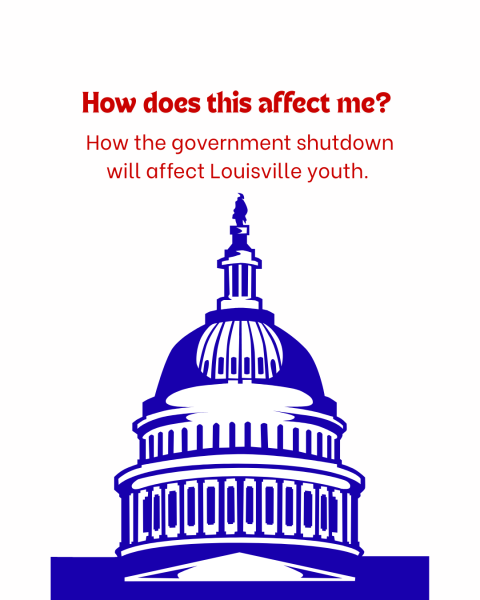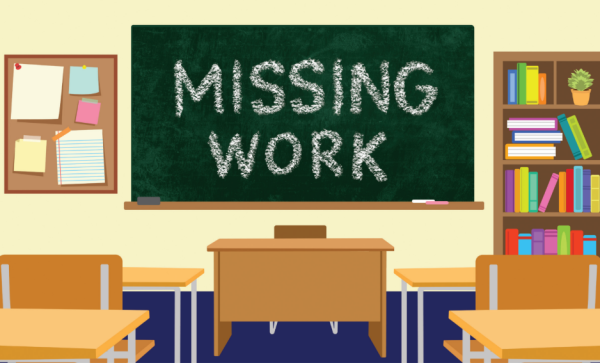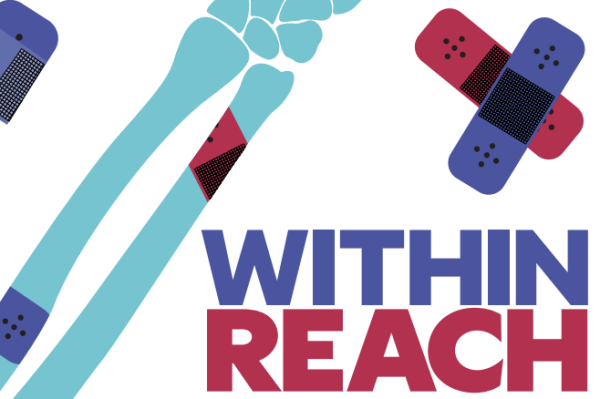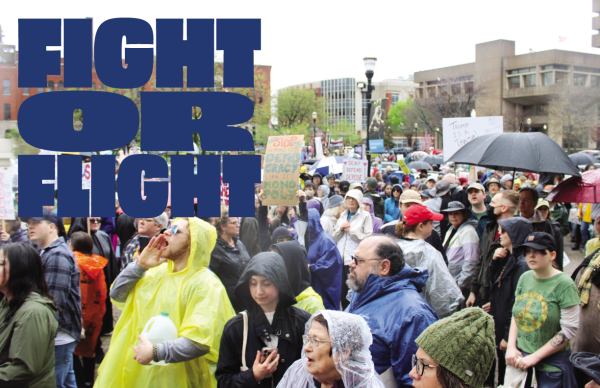Shout Heard ‘Round the World- Students take charge in the worldwide shout for gun reform in the United States.
He was sitting in his office when he got the phone call.
“We’ve got one down,” she said. “Maybe more.”
Trent Lovett, the superintendent of Marshall County schools, hung up the phone and ran to his car. Marshall County High School’s new principal, Patricia Greer, hadn’t given him any specifics over the phone, but his mind went immediately to his freshman daughter who was inside the school.
He rushed down about a quarter mile of backroads to get to the school. When he arrived, students were swarming out of the doors. But it wasn’t loud. It was eerily silent. Survivors of the shooting recall that they were too focused on getting out of the chaotic building alive to scream. Lovett entered the building through the gym. He was met with a living nightmare.
It was carnage. Some students were lying on the floor completely still; others were moving, injured. People were trying to help those on the floor that were still alive. After seeing that the injured students were being cared for, Lovett immediately asked where the shooter was.
In the middle of all the mayhem and disorder, Lovett found a bat poking out of a baseball player’s discarded backpack; he edged down the long, narrow hallway with nothing else to protect himself from flying lead. All he cared about was protecting the students.
“When you’ve been in education for a long time, they’re your own kids. That’s why we try to take care of them best we can,” Lovett said.
That was what motivated him to walk for what seemed like an eternity down the vacant halls. Fortunately, he never saw the shooter, who had managed to kill two students and injure a dozen more.
This incident at Marshall County High School sounds like a scene from a horror movie, but it is neither fiction nor a rare event. We are growing up in an era where mass shootings are normal. Seeing an alert pop up on our phones of yet another mass shooting is becoming normal.
We go to school expecting to learn and expecting to be safe. We show up every day, go through our daily routine, move from class to class, and plan on walking out the doors when the bell rings. Imagine that one day that routine is interrupted by the sounds of gunshots echoing through the halls.
There have been 20 school shootings in 2018, according to CNN’s data compilation, which covered kindergarten through college-level shootings in which at least one person other than the shooter was shot. The data set includes domestic and gang violence, and accidental firearm shots.
The Marshall County High School shooting happened in our own state — closer to home than most — but we weren’t even out of the drafting stage of this story before an even deadlier event occurred.
On February 14, a former student killed 17 people and injured over a dozen more at Marjory Stoneman Douglas High School (MSD) in Parkland, Florida.
The suspect in the Parkland shooting used an AR-15 rifle, a weapon that’s no stranger to mass shootings. According to Time Magazine, six of the 10 deadliest mass shootings in the past decade were committed with an AR-15-style rifle. The students in Parkland have taken to social media to ignite the conversation about AR-15s and many other factors of the gun-control debate in what they’ve dubbed the “Never Again” movement.
Social media has also been a source of overwhelming support for these students and their recent gun-reform efforts. Many students involved in the Never Again movement were surprised about how quickly the movement gained popularity.
“One minute I was crying about my friend in the hospital and the next minute, ‘Never Again’ was this big thing,” Rain Valladares, a Parkland survivor and yearbook photographer, said in a Skype interview with On the Record on March 7. And that’s an understatement. At 1.6 million followers, Emma González, one of the Never Again movement’s leaders, has more than twice as many followers as the National Rifle Association (NRA).
But with a larger following comes a greater pool of critics. And no one knows this better than victims of school shootings themselves.
That is part of the reason why we made the journey to Washington D.C. for the March for Our Lives. We were there as students and as journalists, not just to cover the march, but to honor the victims of Marshall County and of Marjory Stoneman Douglas.
It was two days before we headed to the march that Mollie Davis, an 18-year-old senior at Great Mills High School in Great Mills, Maryland, experienced a school shooting. Great Mills is only an hour away from D.C.. The night we arrived in D.C., we made a point to visit her. It was just moments before we met Davis that national news media declared the victim of the shooting brain dead. To compound it all, we found out that duPont Manual, our own school, was under threat of a shooting for the next day. We found Davis after she began live tweeting updates after a student opened fire at the beginning of the school day on March 20.
“There was one person who said that they doubted I was real because I have good grammar and I was able to type complete sentences during a school shooting,” Davis said in an interview with On the Record. “There are some people who just aren’t letting students handle their grief before they jump straight into attacking us.”
In the replies on teenage gun-reform activists’ social media accounts, adults have called students crisis actors or made claims that they’re too young to know what they’re talking about. That hasn’t stopped students from talking.
Their social media outreach has made their message and resources nationally accessible for students who want to inform themselves about gun legislation in their communities or start protests of their own.
These student voices are what brought attention to “red flag” laws. Many states have already passed these laws that allow judges to take guns from people they deem dangerous. Not even a month had passed since the MSD shooting before Florida legislators passed a bill that outlawed bump stocks, raised the legal age to own a gun to 21, and added a three day waiting period for most gun purchases.
But it’s not just representatives who are feeling the pressure from these students’ international audience. Large corporations like Walmart, Dicks Sporting Goods, and L.L. Bean — to name a few — have raised the minimum gun-purchase age to 21 in their stores.
Corporations, states, and schools are making changes, but there hasn’t been much word from our president.
In the days following the Marjory Stoneman Douglas shooting, President Donald Trump sent prayers and condolences to the survivors and the victims’ families in tweets. He took a more explicit stance later in the month tweeting about arming teachers and his plans to urge congress to ban bump stocks. Since those tweets, however, Trump has been largely silent in the gun control debate.
Kentucky Governor Matt Bevin’s response after the Marshall County shooting was eerily similar in that he offered his thoughts and prayers right away and then talked about arming adults in schools in an interview on WKDZ radio a month later.
This seems to be a trend after mass shootings. Focus less on guns and more on prayers, video games, mental health, violent movies, and parenting. Without action from the president, students around the country took things into their own hands.
The teenagers in Parkland inspired a rise in youth protests against gun violence, and it didn’t take long for students across the country to start planning protests of their own. Teenagers in Washington DC, for example, held a ‘lie-in’ outside of the White House on Presidents’ Day in order to advocate for stricter gun control. The Women’s March also organized a nationwide school walkout on March 14 to show unity and solidarity with the Parkland students. The walkout attracted participants all over the country, and JCPS was no exception.
Outside Fern Creek High School, students huddled together. The movement hit close to home as students remembered a shooting that occured at the school in 2014 when a student shot and injured another student. At duPont Manual, 1,000 students had administration support as they walked out and stood in absolute silence for 18 minutes — a minute for each of the Parkland shooting victims and one more for the students killed at Marshall County. At North Oldham High School, administration wasn’t as understanding. Some students walked out and took a detention. All these actions strengthened the cause, but the biggest symbol of unity occurred March 24.
The Parkland students used their following to promote the March for Our Lives in Washington D.C. on March 24 to demand gun reform. Anywhere from 200,000 to 800,000 people were estimated to have shown up to the March. Pennsylvania Avenue was full of protesters for as far as our eyes could see. Shouts sporadically burst out in the crowd and followed like a wave until they either died out or grew louder. “Vote them out”, “No more”, and “Never Again” were the most common chants. After the sister of a gun violence victim gave a speech that brought tears to many people’s eyes around us, the crowd began chanting “Ricardo,” the name of her deceased brother. Whenever the speaker paused to avoid crying, the crowd would chant “Ricardo.”
The streets around the march were a sea of people and signs. The participants were unified, with virtually no NRA or pro-gun signs in sight.
The march officially started at noon — despite the rallying starting four hours beforehand — and featured speeches from MSD survivors and performances by Miley Cyrus, Ariana Grande, Demi Lovato, and other powerful public figures.
Then, at around 2:00 p.m., the final speaker took to the stage. González described the Parkland shooting from the students’ point of view and then, about two minutes into her speech: silence. She stopped talking and stared into the crowd. We felt awkward, unsure of what to do as we stared into González’s piercing eyes on the jumbotron.
The only noise was the sound of ambulances, nature, and helicopters far away, and the only breaks in the hush were various marchers’ short-lived attempts to start chants.
Finally, she spoke.
“Since the time I came out here, it has been six minutes and 20 seconds,” she said, and a wave of realization washed over the crowd. “The shooter has ceased shooting and will soon abandon his rifle, blend in with the crowd as they escape, and walk free for an hour before arrest.”
Six minutes and 20 seconds doesn’t sound like a long time, but González had shown the crowd just how painfully long it could last. She left us with a haunting call to action: “Fight for your lives before it’s someone else’s job.”
The crowd went wild. The journalists in us wanted to remain quiet and observe unbiased, but the student in all of us burst out as we cheered with them. A unique chant arose in the crowd. “Vote her in,” they chanted. It was clear: the crowd loved González. She was giving voice to us – the students, all across the nation.
But, still, no one knows a definite solution that is guaranteed to both fix the problem and please everyone. Should we focus on creating precautions for if an armed threat enters the school, or preventing the attack before it happens? In the meantime, however, schools are trying to take action of their own.
Schools across the nation are testing different solutions, because hiding in the corner and turning off the lights simply does not work. Nine out of every 10 public schools now have shooting drills according to the National Center for Educational Statistics. Beyond that, school districts are coming up with their own ideas for preventing guns from entering school buildings at all. In Parkland, for example, the students now have to wear clear backpacks. And, in Marshall County, the school implemented metal detectors and backpack checks.
“Anything we can do as administrators to make our students feel safe, that’s what we want to do,” Lovett said.
JCPS responded by sending multiple letters home to students and their families. Teachers and staff also had discussions about safety and their concerns with students in order to make students feel safer and allow them to talk about their feelings surrounding the recent tragedies.
Even our school, duPont Manual High School, is working to make the environment safer as a result of the rise in shootings. Students must wear IDs at all times and always carry a pass when in the halls during class. The Alert, Lockdown, Inform, Counter, Evacuate (ALICE) drill has also been implemented in schools throughout JCPS to show students tips for disarming a shooter and evacuation rather than hiding in place and waiting for the “all clear.”
Students aren’t the only ones with stakes in this issue, however. In February, the Kentucky senate proposed a bill that would allow schools to arm some trained staff members. The idea of arming teachers has been circulating in school districts all over the country, but there’s one group of people who are particularly opposed: teachers.
According to a Gallup poll from March 5 through March 12, 73% of teachers are against being armed.
If teachers have guns, some believe that the chances of a school shooting will decrease, but the idea also raises a lot of questions: Where would teachers keep their guns? How would schools pay for them? What training would teachers receive? All these questions aside, there’s no reliable evidence to suggest that arming teachers would actually prevent tragedy.
Lovett said that many people think that more kinds of security in schools will prevent school shootings, but he disagrees. He thinks that if a person really wants to shoot up a school, they will find a way around the barriers and metal detectors.
Unlike Parkland, the Marshall County shooting had no warnings. According to Lovett, the shooter showed no signs or symptoms socially or behaviorally. No complaints or worries. This happened out of nowhere.
The horrifying truth is that it could happen to any school. Everyone always thinks it will never happen to them. “We were always like, ‘Why are we upping drills? Who cares? This is Parkland. We’re a safe place.’ but it is serious,” Valladares said, “They always say it could be you, it could happen to you, but it can and I hate the fact that I had to go through that to realize it.”
We are writing this paragraph on May 11 and, this morning, at 7 a.m., there was another school shooting at Highland High School in Palmdale, California. The earlier CNN statistic is no longer accurate. There have no longer been 20 school shootings in 2018. There have been 21. Now, the question is how do we stop it? How do we make sure it never happens again?
Donations are collected through The Publishers, duPont Manual High School's booster club for J&C. On The Record relies completely on sponsorships, advertisements, and donations to produce and distribute each issue. Please consider donating to our cause, and helping the student journalists of OTR amplify youth voices for years to come.


